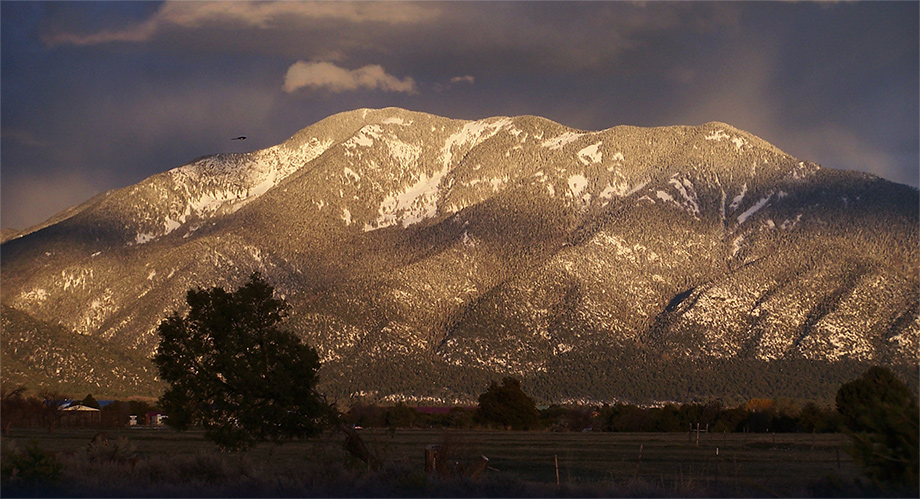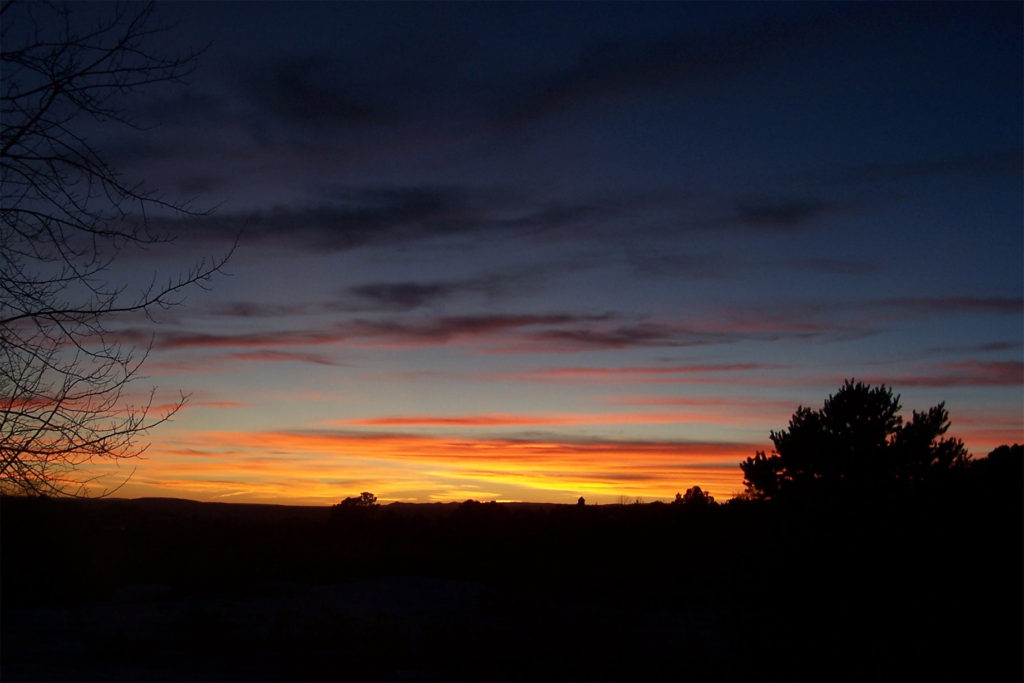Suggestions for buying raw land in New Mexico.
We often get inquiries from families who see the reasonable raw land prices in New Mexico and are looking to move into our area and build a sustainable dream home from scratch. So much so that we have developed this page to provide information regarding the realities of living in rural New Mexico to provide a starting point for first time homesteaders of raw land.

As much as we are happy to help folks design and build their own home, it is up to each owner to do research to find out as much about the property as possible. Not knowing key details is crucial to prevent hitting any roadblocks which could get in the way when building your new home.
The more you know – the more you can plan an effective budget.
Below are a few beginning steps to follow based upon our experience working with those building in New Mexico, often on raw undeveloped land:
1) Work with a realtor if you can. It is enticing when land is offered for sale through an owner direct. However, a realtor is going to know the details and history behind a plot which can make or break any raw land development or purchase. We suggest exploring both options – looking at land through a realtor and also buying direct from an owner if an appealing land option presents itself.
2) If buying directly from an owner we suggest a visit to the county offices, specifically the County Clerk when looking at a piece of land. Ask for details on the plot. Are there any back taxes owed? Is there a clean title? Are there any hidden county aspects you should know about? They are happy to provide records and details.
3) When visiting the land for the first time. Review it in terms of road conditions and/or easements. Take note, is there a road drivable for fire trucks? How far is the land from the nearest fire hydrant? The location of the nearest hydrant will affect what the county fire marshal determines is acceptable. If the house is too far away you may be required to install a fire sprinkler system in your house, which can run between $7,000 -14,000 (for pipes, large water storage tanks, pumps, sprinkler design and installation) – depending upon the size of the house. As fires become more of an issue over time, we are hearing from some county officials that fire sprinkler systems may soon become mandatory for houses built in more rural areas.
4) Housing Association Requirements (HOAs). If a plot of land you are considering is within an established community there may be requirements you will have to follow to receive approval for your home design. Things such as minimal home size, what style of home, even down to materials and color choices. When buying from either an owner or realtor, find out if there are HOA legal covenants from the very beginning if you can. Most HOAs require approval on a home design, so get involved with them before you begin designing to save time and money.
5) Energy – On-Grid on rural land plots. If you are planning on being on or off-grid both have challenges. On grid, where is the closest transformer to hook into via the local utility company? Will it require permission from a neighbor to either access or provide easement to? Are overhead or underground wiring required by the land covenants? Poles verses underground? Underground lines are less unsightly, but more expensive to install.
Utility companies have control over the vendors they use who are qualified to install lines, dig trenches and for transformer installations. Costs can add up as they often don’t need to do competitive cost bidding. It’s best to speak with them directly and obtain a written quote, verses a verbal guesstimate. Set up a meeting with your realtor and a utility representative and have them provide a quote for a hook up, especially if you are buying more than an acre or two. This can take some time as utility reps are very busy and often cannot simply meet without a few weeks advance notice. Please make certain of your decision to be on grid when calling utility reps out to view your land – rather than simply trolling for information.
6) Energy – Off-grid or Grid-Tied. If you are planning upon having off – grid photovoltaic (PV) solar electric for your energy needs, can you finance it yourself? As of this writing to our knowledge, only one bank in all of northern New Mexico – Centinel Bank in Taos, will finance off-grid solar homes built from the ground up. Other banking institutions will finance raw land but will not go near off-grid home construction/mortgage loans. We only have a select knowledge of local banking policies by working with them through our clients. So, as always, do your own research.
For a grid-tied solar PV home, dig in and do research with the local utility – each of them have different requirements and systems. It might be best to look into cost comparisons for each of your energy options – as pricing may steer you in a direction you might not have considered.
7) Land/Terrain. Many lots in New Mexico have land variations which either include slopes or large arroyos (rain washes or dry river beds) which can be deep and wide and unstable for building.

For example: Attempting to access the best view by positioning a home upon a hilltop can cause some challenges. Foundations will be much more expensive if the terrain requires retaining walls, large amounts of grading or a complex foundation – and civil or structural engineers will most likely need to be involved to survey and assess the land, as some counties will mandate.
Also, civil engineers may be called onto a project now and again if a driveway exceeds a 500 foot length from the main road, or access to the home site is on land with varied or complex elevations. This will add to the cost of any raw land development – guaranteed – and could run well into the many thousands of dollars added to a budget.
The net net is if your budget is limited, bear in mind that complex placement upon the land will add to the cost of building from scratch. We often will visit land families are considering buying to help advise on the home placement. Should you work with us or another builder, don’t hesitate to ask for a site visit.
8). Water. If your lot has city septic and water in place, that will be the most cost efficient option when planning a budget for a new home. Relying upon water catchment for water sourcing is possible. However be aware that the cost of setting up a catchment system includes large above or underground tanks to take advantage of sporadic New Mexico monsoons and to stock up for any drought conditions. Also included in those costs will be pumps, water purification, filter and clean out systems to keep debris out the roof run-off. Some counties will not issue permits unless families have a water hauler account set up to provide a backup for times when there simply is no rain (suggested research – historic New Mexico drought conditions where you are considering buying land).
9) Septic/Waste. Hooking up to a city wide septic system is the most economical option when building a home from scratch. Otherwise, installing a new septic system on raw land fitting mandatory waste code is a must. Families hoping to use large composting systems that are not state sanctioned could find that they will not be able to receive a house permit. One more thing to research in the county where you are looking to buy land.
10) Financing. If you need a bank loan to build your house or buy your land, you MUST do research to find out which banks will loan for what types of homes and projects (see Energy – Off – Grid, above). Most banks, even in New Mexico will not loan any funds to an off-grid new build/home but might loan funds to buy raw land. Simply contact the bank you hope to use as your lender and speak with a mortgage manager. Some local banks completely stopped mortgages due to the housing crash of 2008, so you may need to dig around a bit.
11) Research and Read! A link below from UBuildIt has the 8 key issues any homeowner needs to research and know before considering building a home, especially in rural or undeveloped areas like much of New Mexico. Topics include: Location – Can you build on it? – Types of lots – Zoning – Permitting – Restrictive Covenants – Utilities and Roads – Liens and Easements – Surveys – Costs to develop the land.
It all may seem daunting, but doing proper research on a plot of land verses simply signing on the dotted line can be the difference between actually building your home there, or having to sell it and change your plans. Sadly, we experienced the second scenario with a client who ended up putting their land up for sale and leaving the idea of building their dream home in New Mexico behind due to costs adding up beyond their budget.
We hope this information helps you on your way. Remember to do plenty of research before you begin reaching out to builders. We are always happy to give advice, but are also busy working on the job site on current projects.
Contacting us to ask questions is great – we encourage conversations throughout the process of buying land and designing you dream home, but please do not ask us to walk you through the process of building a home on raw land from beginning to end. The internet is full of data, and it is the job of realtors to help families do just that.

When it’s time to begin designing your home.
Once you have a solid idea of what piece of land or lot you are seriously buying – or if you already own your plot of land, now you are ready to begin developing your dream home. We suggest you dig around online for home plans, or take note of houses you have seen and like to begin creating a list of things you need. A good idea is to break down the list into “wants” and “must haves”. The idea being, when you begin pulling together the house budget you will know which items could be modified or even eliminated if cost becomes an issue.
When beginning the design phase with clients we have worked with notes on a napkin, having rough floor plans and everything in-between. Any beginning is a good one as it gives any builder an idea of what exactly you are looking for, helps them get to know you and see where your priorities lie. We often will, upon reviewing a layout, look for any areas where the floor plan/flow could be adjusted to make a home more cost efficient or streamlined during the building process. Especially if folks have an established budget in mind and we can see right off the bat that their design will not fit the budget – we will offer up design modifications for consideration.
All in all the process can be a bit overwhelming as building a home is a huge undertaking. We do our very best to help families feel supported and to work with the needs of everyone in mind at all times.
We hope this page has given you some ideas and information you can use as you search for the perfect piece of land to call home.



